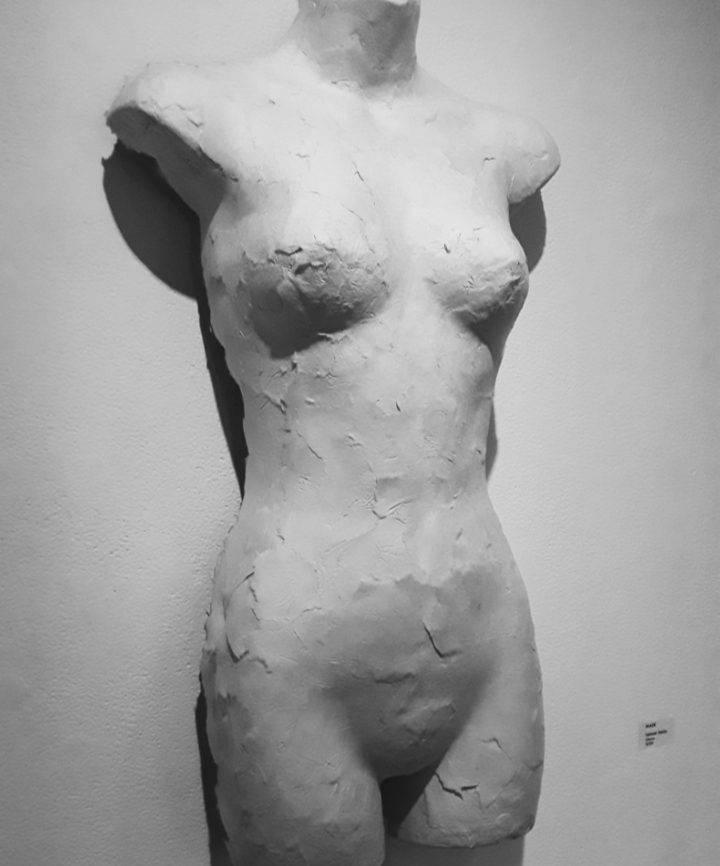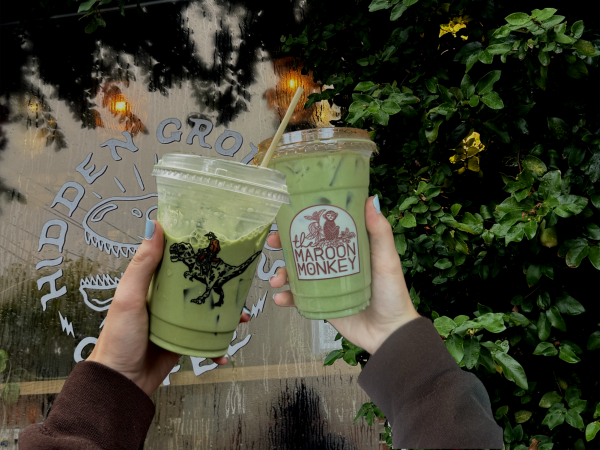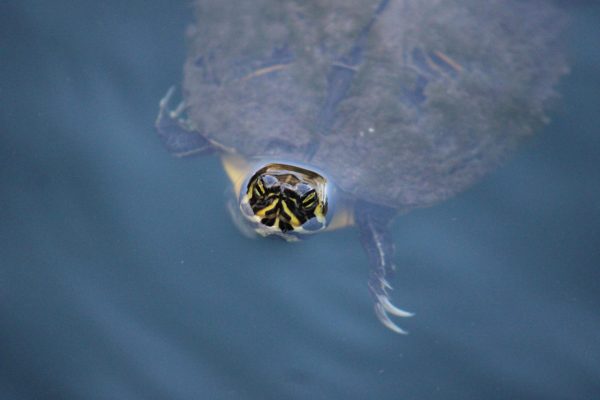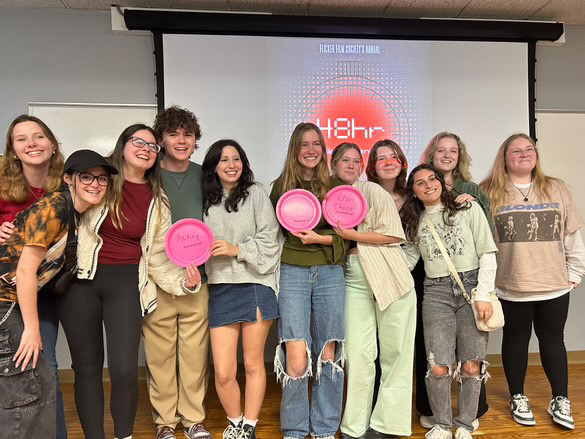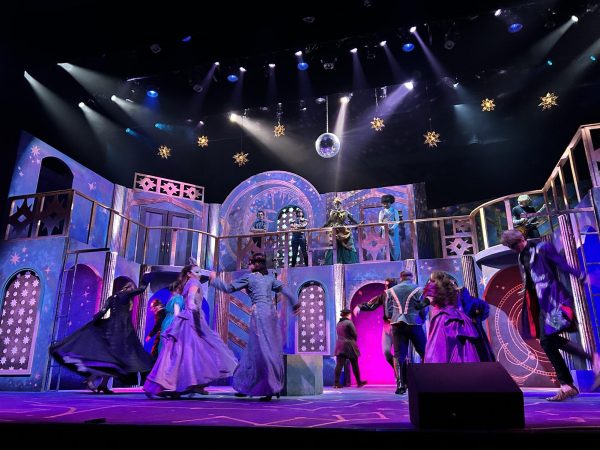“Of the Earth” exhibit: fiber and rope and twine, oh my!
The pendant on display to the right side of the gallery has an obtuse-triangular shape with rounded corners. It contains a zigzag pattern of complementary pigments: red, orange and greenish-blue.
The pendant on display to the left side of the gallery has a square-diamond shape with a serpentine pattern of black and white. It imitates a sort-of zebra-striped design.
Each pendant is attached to a sterling silver chain that loops around a black velvet necklace stand. They are shellacked with a layer of hardened resin that makes them appear deceivingly stone-like even though they are made from recycled paper.
The “Of the Earth” exhibit showcases artwork made from natural materials, including recycled paper, cotton, clay, rope and twine.
Tricia Messenger and Lemuel Heida worked in collaboration over the span of two months to produce the artwork showcased in the Ann Flack Boseman gallery. Throughout their creative process, they experimented with new techniques and ended up creating between 20 and 30 samples of different fibers.
Tricia Messenger is a trained artist who specializes in pottery and ceramics. She was trained on how to use clay through an apprenticeship.
“My art style is more carefree,” Tricia said. “I used to be a librarian, so I was around a lot of books— a lot of paper. I wondered, what can people do with paper. I started playing around with it and I played around with colors and pigments.”
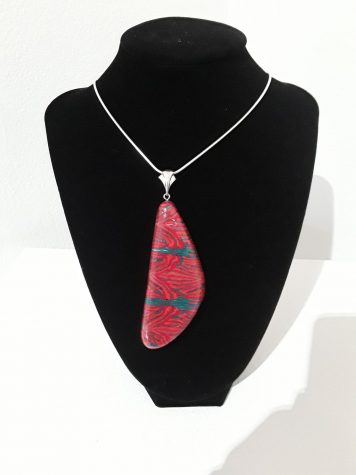
Tricia incorporated bold pigments into the pendants and the varying sizes of terracotta bowl on display. Terracotta is a clay-based ceramic. It is typically a brownish-red color and may be glazed or unglazed.
This brownish-red color can be seen on the exterior of the bowls displayed closer to the back of the gallery. The exterior also appears to have a jagged, mountainous texture.
Lemuel Heida is a UNCW Studio Art alumnus. He was trained in crafting handmade paper sculptures. The technique Lemuel used to create the paper sculpture in the exhibit is called casting.
Casting is the process in which a material used in a mold to form a shape. The material is usually in liquid form and the mold usually contains a hollow cavity. When the mold sets, the wet material used in the casting process will solidify into the desired molded form.
Lemuel used this technique in creating the sculpture MADE. The sculpture is hanging on the wall to the right side of the gallery near the entrance doors. MADE is a sculpture of a feminine figure. To achieve this shape, Lemuel used a mannequin part in his casting process.
The sculpture is made from abaca, a banana-tree plant-based paper. Lemuel took wet sheets of abaca and draped them around the mannequin to form the shape of the sculpture.
“I learned paper casting in school,” Lemuel said. “I tried using cotton paper first, but it failed. I also used a mannequin part made of cheap plastic in the feminine form.”
Although Lemuel’s art style is more “meticulous” and both artists specialize in different areas of art, Lemuel and Tricia were able to collaborate within a two-month time frame to produce a collection of artworks for the “Of the Earth” exhibit.


